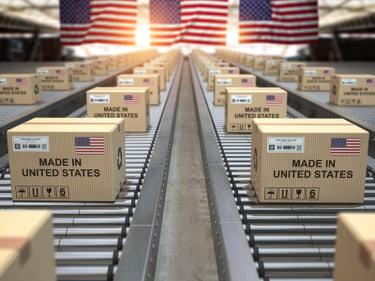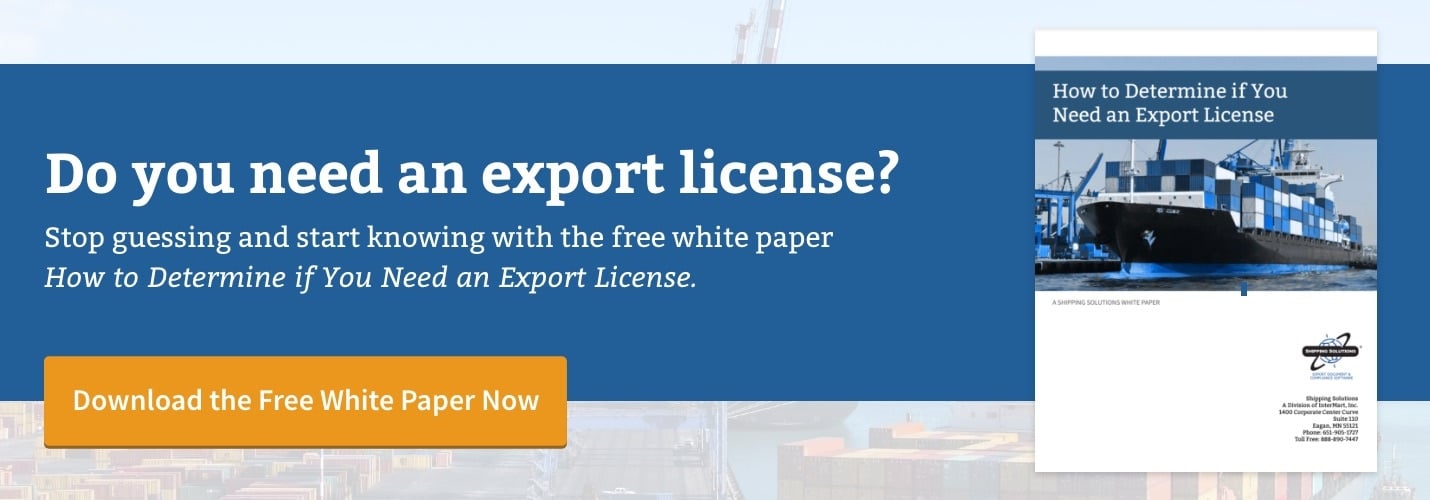The International Trade Blog Export Compliance
N.E.S.: An Important Term for Export Product Classification
On: March 16, 2022 | By:  David Noah |
3 min. read
David Noah |
3 min. read
 Have you ever stopped and really paid close attention to something in your environment, thinking it’s new or novel, only to realize it’s something you see every day? For me, once I’ve seen it, I feel like I see it everywhere.
Have you ever stopped and really paid close attention to something in your environment, thinking it’s new or novel, only to realize it’s something you see every day? For me, once I’ve seen it, I feel like I see it everywhere.
If we look at exporting specifically, this happens all the time with the term n.e.s., or “not elsewhere specified.” You probably don’t recognize how prevalent the term is until you see it—or are called out because of it. From then on, you’ll see it everywhere.
We spoke with Anthony Cambas, Manager of International Trade at the University of Mississippi and former U.S. Customs official, about the significance of n.e.s. and why it’s a term exporters shouldn’t just gloss over, but instead something they should pay attention to constantly.
What Is N.E.S.?
Literally, n.e.s means “not elsewhere specified” and is used for different purposes and is not limited to uses revolving around export compliance. This definition obviously does not adequately convey the nuances and technical side of the abbreviation when used for export compliance reasons. According to Cambas, exporters must be clear in what context and for what purposes we are defining it.
The Importance of N.E.S.
According to Cambas, n.e.s. “matters greatly for export compliance, as it plays a vital role in determining the proper Export Control Classification Number (ECCN). Often it is glossed over by exporters who lack awareness of its importance and have “never had a problem” with the Bureau of Industry and Security (BIS), Customs and Border Protection (CBP) or other enforcement agencies—until they finally do.
By not using n.e.s. properly, exporters may classify their products using the wrong ECCN number or even determine their products are EAR99, or No License Required (NLR). The wrong product classification may result in an incorrect electronic export information (EEI) filing through AESDirect, a mistaken determination of which agency has jurisdiction over the goods, the inability to properly determine if an export license is required, misuse of license exceptions, and more.
In the end, exporters can experience export clearance delays by CBP and other partner agencies and be subject to fines and penalties. This makes export activities harder to be sustainable and profitable.
When Is N.E.S. Used?
The term is used when it is included in various ECCN numbers on the Commodity Control List (CCL). This may imply that there are other ECCN numbers that may also cover a specific controlled item, technology or activity. It is not used as a general, overarching concept to my knowledge, said Cambas.
One important note: From the perspective of Harmonized System (HS) classification using the Schedule B and/or Harmonized Tariff Schedule of the United States, exporters will come across “not elsewhere specified or included.” This is a similar concept but an entirely different issue whose meaning and application is governed by the HS classification General Rules of Interpretation.
How Is N.E.S. Related to the CCL?
It is often found in the written definitions and parameters of various ECCN numbers that are found on the CCL, which is part of the U.S. Export Administration Regulations (EAR).
What Should Exporters know about N.E.S.?
When exporters see the term n.e.s., they need to know that it cannot be ignored and must be taken into account to determine the proper ECCN number. It must be approached through the steps that are spelled out in the EAR for determining ECCN numbers, including not only taking into account the actual product or service, but also the components and parts that make up an item or technology, as well as for what it is used.
Where to Learn More about N.E.S.?
There is a lot of information online about n.e.s., including explanations of the topic by experts and practitioners, the code of federal regulations and official guidance by government agencies. Keep in mind that understanding and interpreting the foregoing properly requires knowledge, training and experience and ensuring that one is reviewing the most up to date information. BIS officials, attorneys, consultants, customs brokers and freight forwarders are important resources.
This information is being provided by Anthony Cambas for informational purposes only and does not constitute legal advice. Mr. Cambas bears no responsibility or liability for any errors or omissions.
Like what you read? Subscribe today to the International Trade Blog to get the latest news and tips for exporters and importers delivered to your inbox.

About the Author: David Noah
As president of Shipping Solutions, I've helped thousands of exporters more efficiently create accurate export documents and stay compliant with import-export regulations. Our Shipping Solutions software eliminates redundant data entry, which allows you to create your export paperwork up to five-times faster than using templates and reduces the chances of making the types of errors that could slow down your shipments and make it more difficult to get paid. I frequently write and speak on export documentation, regulations and compliance issues.



